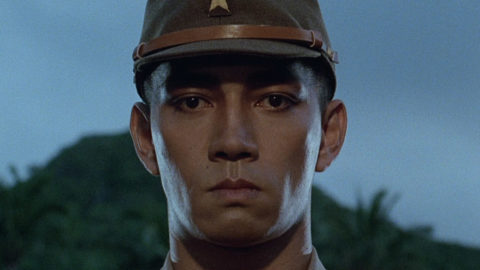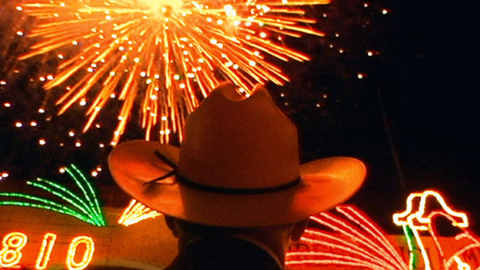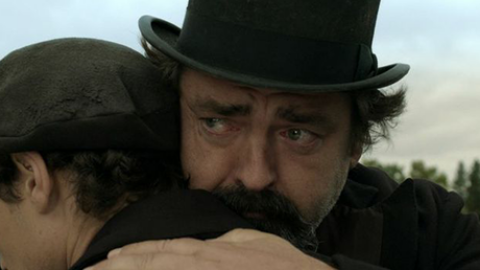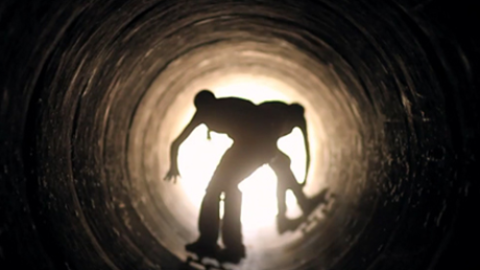By Violet Lucca in the March-April 2017 Issue
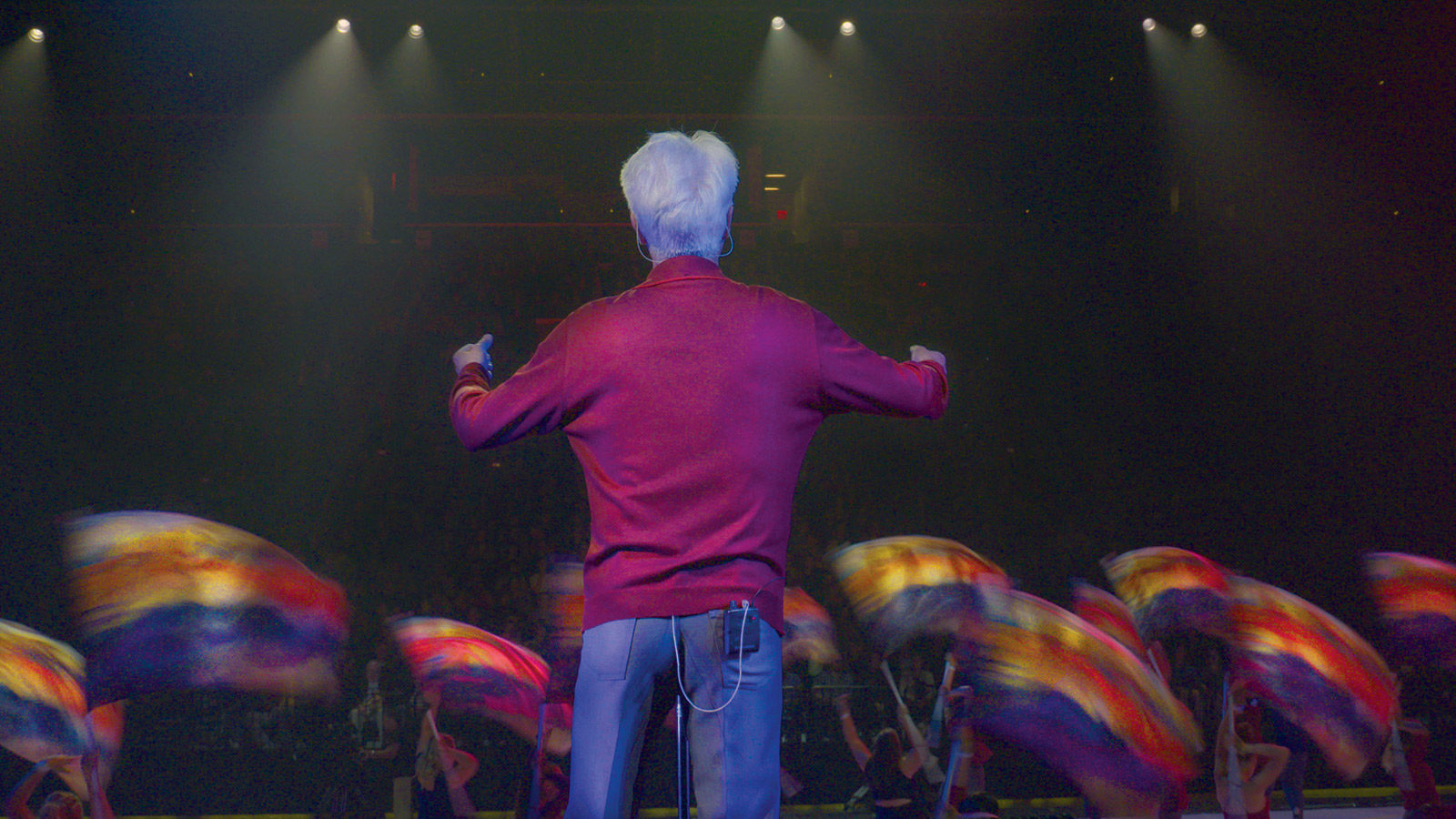
Review: Contemporary Color
(Bill and Turner Ross, USA, Oscilloscope, Opens March 1)
Recapturing that old MTV magic had to be somewhere in David Byrne’s mind when he conceived of “Contemporary Color,” a large-scale concert staged at Brooklyn’s Barclays Center pairing similar-sounding music acts (such as St. Vincent and tUnE-yArDs) with color guard squads from across North America. For the uninitiated, color guard is a choreographed group dance that usually takes place before high-school football games; these routines can involve tossing and catching (fake) guns, waving around flags, and performing Vegas-style moves to a pop song. As tacky as this sounds—trust me, it is, and 100 percent irony-free—these performers are extremely dedicated and spend hours practicing their elaborate routines. In recent years, color guard groups have come to incorporate socially conscious messages into their routines, which gives you a greater sense of how seriously it is taken among certain citizens of these United States. (I’ve paid my dues by sitting through middle- and high-school assemblies watching show choir, and reserve the right to be critical of it.)
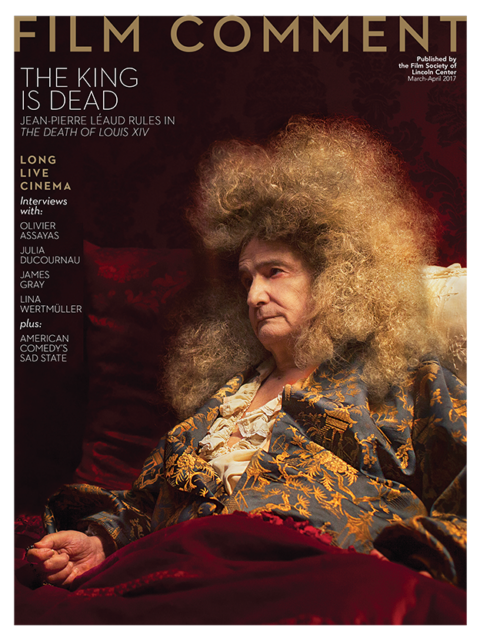
From the March-April 2017 Issue
Also in this issue
The nature of the art form underlines the fundamental problem with Byrne putting these two very different spectacles together: the color guards’ routines were choreographed to specific music different from what the musicians perform at Barclays (because the concert took place in late June 2015 near the end of the school year, and there was no time to create new ones). Assessing how well the music matches the dancing (and vice versa) is complicated by Bill and Turner Ross’s approach to filming the concert, done with the aid of multiple cinematographers. Unlike that other live concert doc Byrne was involved in, Stop Making Sense, the Ross Brothers fracture the bodies on screen, and make little attempt to create a coherent sense of space or temporality. In Nelly Furtado’s performance, for example, the action is momentarily framed so that the focal point of the screen is the space between Furtado (standing on an elevated part of the stage) and the dancers (who are whirling down below her), neither fully visible, diffusing the energy of the performance. (What makes color guard gripping is the power of group motion: the unified intensity and precision of that many people can captivate anybody, however fleetingly.) The fragmentation does produce some dramatic moments: during another number, a dancer is yanked offstage through a curtain and then sits in the blackness, her chest heaving as the music thunders on—a successful anticlimax that emphasizes the physical and emotional toll of this type of performance.
The chopped-up glimpses are further muddled with cutaways to audience reactions (barely audible but subtitled—it’s difficult to tell who’s actually talking), behind-the-scenes rehearsals, and performances of the routines on unidentified suburban streets. Intermingled are interviews with color guard members, a few of their dads (who double as stagehands), and coaches; some are conducted by the Rosses, others by a pudgy man in a cheap tux doing a schlocky emcee routine. His hokiness is perfectly suited for the Barclays Center’s giant screens above the crowd, but it falls short when he’s faced with the earnest emotion of a color guard member bursting into tears after performing with his friends for the last time, successfully completing “the best run of my life.”
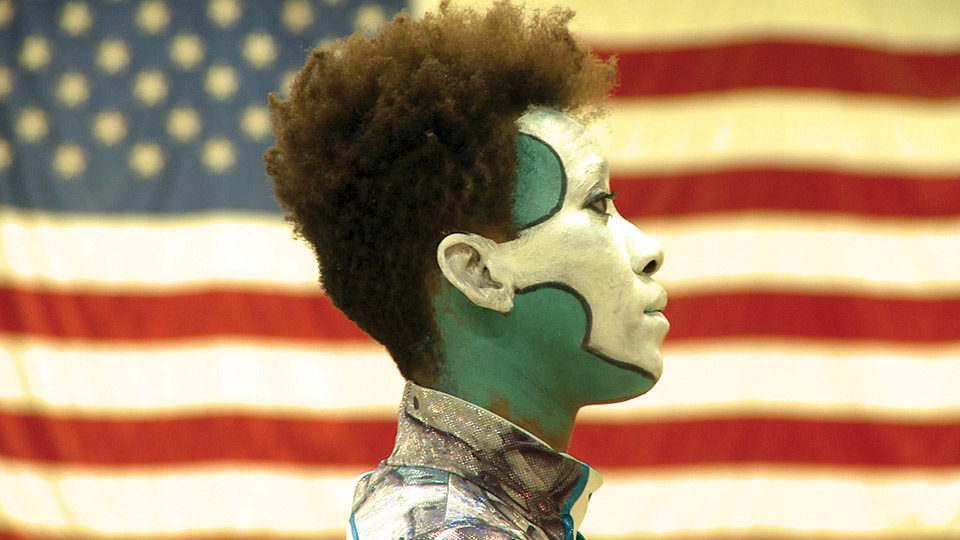
In moments like this, it’s hard not to be reminded of Byrne’s True Stories, which toed and frequently crossed the line between celebrating and snickering at flyover country. Byrne, who chose the color guard groups at their annual competition in Dayton, Ohio, appears in the doc as a hyped-up high-school coach in a slightly too cool tracksuit—an attempt to go native. Although the musician has made a frequently satisfying career out of appropriating a variety of musical and performance forms (even the stumble dance that opens Stop Making Sense was poached from a musical found deep in the Museum of Modern Art’s vaults, to say nothing of his portable beatbox), this particular endeavor never quite pays off. The Rosses’ film ambitiously attempts to bridge the gaps created by that act of borrowing, but gets stretched far too thin.



